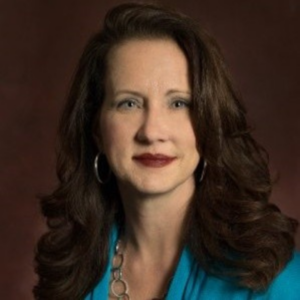How to Deliver Training to a Global Workforce and Work Smarter
Michelle Chasse, Global Director, Learning & Talent Development at Food for the Hungry, knows the importance of skill-building for a highly de-centralized workforce. “We operate in seven different languages across 18 countries. We need a learning management system that allows us to offer the same training for certain key topics and also allows us to create our own. Any learning system has to support the company’s vision and increase the impact of our work.”
We discussed Michelle’s experiences and lessons learned when using Humentum Learning Services (HLS) at Food for the Hungry.
Is learning a significant priority of the organization?
Yes, we value learning and internal professional and personal development. We talk about learning and how we can continuously develop our people so we can deliver on our mission.
What did your organization use for learning before HLS?
LINGOS (now Humentum Learning Services or HLS) was our first L&D platform. Before that, we went with many personal, just-in-time, decentralized learning styles, with each country office developing what they needed. But as an organization, you need a structured system to align and move in one direction. That’s one reason we moved to an LMS (learning management system).
What are the major challenges you and other learning professionals at your organization faced?
We struggled with figuring out how to align our learning when working cross-culturally and being de-centralized. We intentionally must create time for personal-development with so many competing priorities and essential projects. Nonprofit professionals are so focused on the communities where we work that we forget about our own development.
The other thing we struggled with was languages. We operate in seven different languages across 18 countries, so we needed appropriate content translations, acronyms, buzzwords, and so on.
How did HLS work with you to solve these challenges?
Our focus is to work smarter, and do more with less. The self-paced component of the LMS supports this so people can learn topics they need in the moment. HLS provides us access to courses in different languages and the flexibility of accessing learning materials anytime is valuable. We also use Rise 360 and other HLS tools to design and upload (and track) our own courses and learning paths. That’s been very helpful.
HLS has professional-level training we can use with our staff right out of the box. Also, you can meet like-minded peers in the same profession via their networking spaces to share best practices and creative problem solving.
How do you and your peers usually learn about new offerings?
The networking opportunities provided by Humentum are a great starting point. Talking to other practitioners and understanding how they tackle similar challenges is essential. I often reach out to other L&D professionals I met while networking at Humentum events.
Best lesson — we’re not alone. The nonprofit community is very generous, and we want to share what’s going well with each other.
The Wednesday weekly drop-in support makes a big difference. It’s a place to discuss questions, learn, and ask for support. The drop-in also helps with training new team members on all HLS has to offer.
What are your favorite benefits of HLS?
The ownership and personalization features are excellent. We live and die by Articulate 360 for designing our own courses. Within the last few years, we’ve created quite a few of our own courses and compliance learning paths. Rise 360 is excellent for quick course design; we can design courses rapidly and upload them ourselves into the system.
The other important piece for us is the affordability of the Humentum courses. The cost allows us to have a great impact through sharing development opportunities with team members around the globe.
What kinds of training are most popular on your LMS?
Project management courses are popular to increase our skills within the organization and build a common language around the PMD Pro standards. Personal development courses, program management, and safeguarding courses are also very popular. There’s also interest in courses related to communications and crucial conversations.
What would you say to a peer about the benefits of an LMS?
Humentum and HLS have been great networks and platforms for us in the INGO sector. From the support and best practice sharing to the LMS and quick feedback from Humentum staff exactly when I need it. With their support, HLS helps us to increase our impact as a small L&D team.
Are you curious about launching a global L&D program with Humentum?


